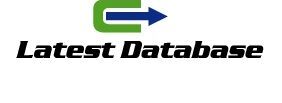Properly formatting phone number data for CSV (Comma-Separated Values) files is essential for maintaining data integrity, enabling smooth imports into CRM systems, and ensuring accurate communication campaigns. At the most basic level, consistency is key. Every phone number in your CSV file should follow the same standardized format, ideally using the international E.164 format (e.g., +14155552671). This format includes the plus sign (+), the country code, and the full number without spaces, parentheses, or dashes. Using E.164 ensures compatibility across systems and prevents errors during parsing or validation. When phone numbers come from various countries or user inputs, you can use tools or bosnia and herzegovina phone number list libraries (such as Google’s libphonenumber) to convert them into a consistent format before exporting to CSV. Additionally, always include a separate column for country codes or country names if numbers are not already in international format—this helps with validation, segmentation, and global outreach.
CSV files can present challenges with how certain
applications (like Excel or Google Sheets) interpret phone number data. One of the most common issues is truncation of leading zeros, especially for local or national numbers. Excel, for instance, may automatically interpret phone numbers as 7 steps to craft the linkedin connect message numerical values, which strips out leading zeros and reformats the number. To avoid this, format the phone number column as text before importing or opening your CSV. Another trick is to prefix the number with a single quote (') to force Excel to treat it as text, though this is best done programmatically or in bulk. Also, avoid including any non-numeric symbols unless you’re deliberately formatting with the international “+” sign. Spaces, parentheses, and dashes may be visually helpful but can create inconsistencies and complications when importing into automation tools or validation APIs.
To future-proof your CSV files, include
additional metadata where possible—such as columns for line type (mobile, landline, VoIP), validation status, last update timestamp, or opt-in status for marketing compliance. These extra data points can help with filtering, personalization, and legal auditing. Always make sure your headers are clear and unambiguous—use labels like Phone_Number, Country_Code, Opt_In, rather than vague terms like Contact. When exporting phone numbers from different systems (e.g., CRM platforms or web forms), validate and clean the numbers before saving to CSV to prevent corrupt or duplicate entries. Regular audits and fax marketing deduplication routines will also keep your CSV files efficient and trustworthy. Ultimately, well-formatted phone number data makes your campaigns more reliable, your integrations smoother, and your data pipeline far more manageable.






